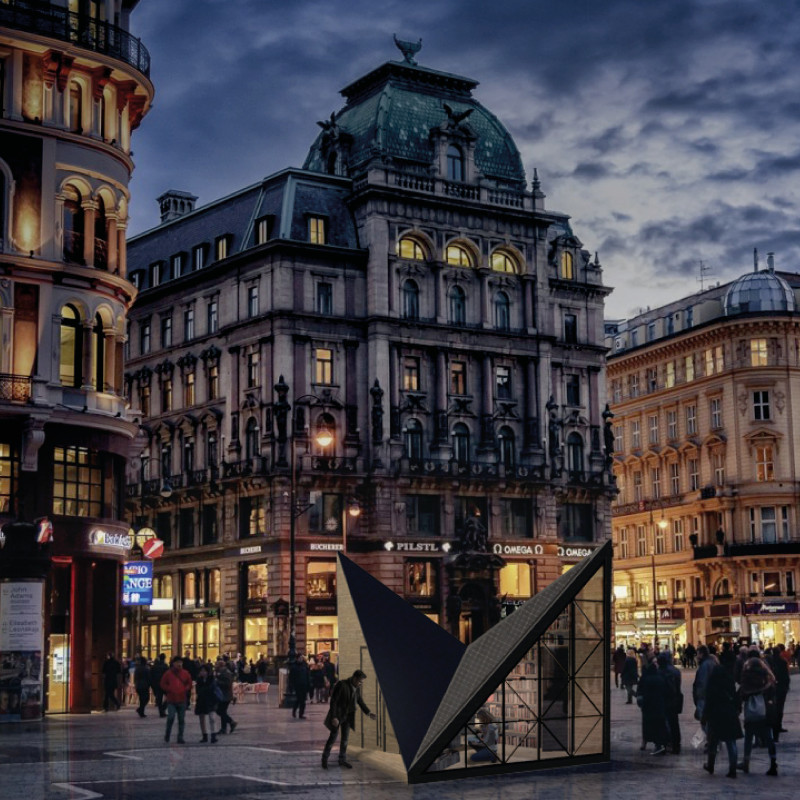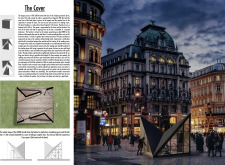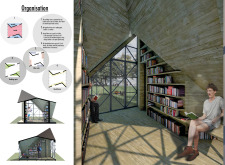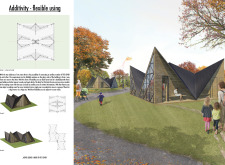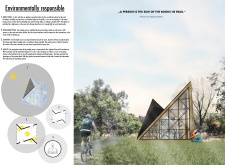5 key facts about this project
THE COVER is an architectural project that uses geometry in an interesting way. Located in public areas like parks and pedestrian paths, it functions as a reading space that promotes literacy and community interaction. The design is based on a simple cube shape, balancing form and function effectively to create an inviting environment.
Form and Function
The cube serves as the main geometric element, with diagonal cuts on each side creating both solid and void spaces. This design choice enhances the use of space while also supporting the overall idea of the project. The dark roof, featuring an opening to the sky, resembles an open book cover, linking the building to its purpose of providing a place for reading.
Spatial Configuration
Inside, the reading rooms are laid out to make the best use of their compact size. The entry is designed to guide visitors smoothly from the outside to the inside, using principles similar to the golden ratio. This helps foster interaction while allowing people to appreciate the architecture from different angles, creating a connection with both the space and nature around it.
Natural Lighting and Environment
Large windows play an important role in this design. They let in plenty of natural light and help blend the inside with the outdoors. When opened, these windows create an airy feeling that enhances the reading experience. The symmetrical layout, coupled with different facades, gives visitors distinct visual experiences as they approach the structure.
Materiality and Sustainability
Wood is the primary material used, offering both durability and warmth. This material choice supports the functionality of the building, making it weatherproof and usable throughout the year. The special quality of the wood not only enhances the space aesthetically but also contributes to sustainability.
Finally, the design encourages flexibility. Different units can connect to create a larger arrangement that supports various reading activities.
Standing in its environment, THE COVER provides a laid-back yet purposeful space that invites everyone to explore the world of reading.


